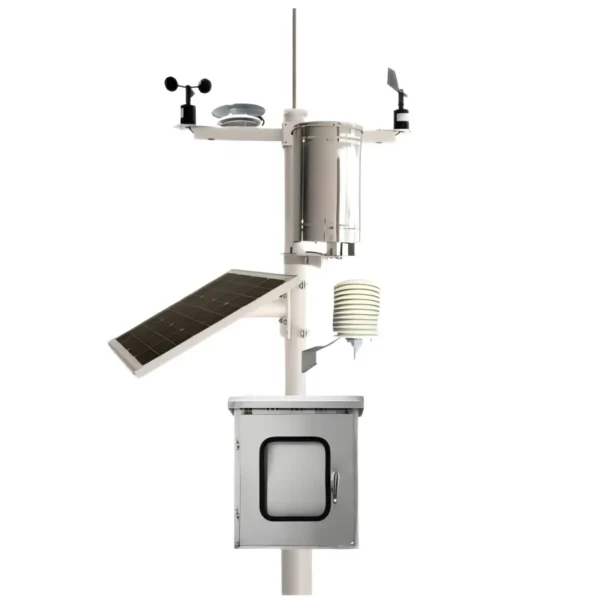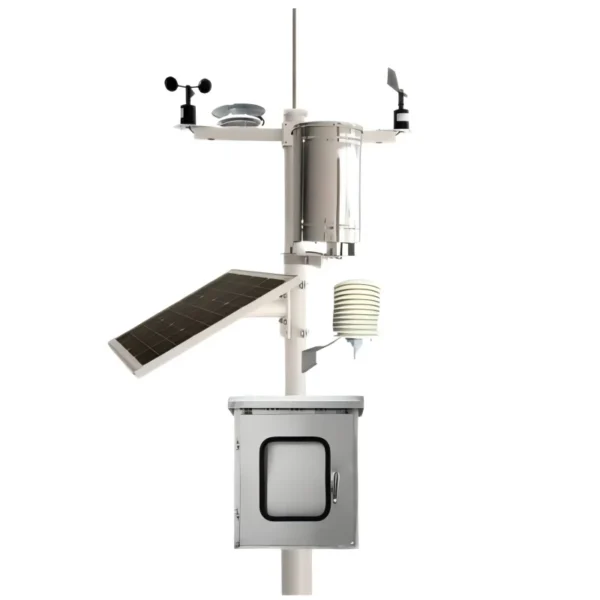
# Understanding the Functionality of Automatic Weather Stations
Automatic Weather Stations (AWS) are advanced systems designed to collect and record meteorological data without the need for constant human intervention. These stations are widely used in various fields, including agriculture, aviation, and environmental monitoring, to provide accurate and real-time weather information.
## What is an Automatic Weather Station?
An Automatic Weather Station is a sophisticated setup that consists of multiple sensors and instruments to measure various weather parameters. These parameters typically include temperature, humidity, wind speed, wind direction, rainfall, and atmospheric pressure. The data collected by these sensors is then transmitted to a central database or displayed on a local interface for analysis and interpretation.
## Components of an Automatic Weather Station
An AWS typically comprises several key components:
– Sensors: These are the primary devices that measure different weather parameters. Common sensors include thermometers for temperature, hygrometers for humidity, anemometers for wind speed, and barometers for atmospheric pressure.
– Data Logger: This component records the data collected by the sensors. It stores the information and can often transmit it to a remote location for further analysis.
– Power Supply: AWS units are usually powered by solar panels or batteries, ensuring they can operate continuously without interruption.
– Communication System: This system allows the AWS to send data to a central server or other devices. It can use various methods, including radio, satellite, or cellular networks.
## How Does an Automatic Weather Station Work?
The functionality of an AWS can be broken down into several steps:
– Data Collection: Sensors continuously monitor and measure the weather conditions. For example, a thermometer will record the temperature, while an anemometer will measure wind speed.
– Data Recording: The data logger collects and stores the information from the sensors. This data is often timestamped to provide a chronological record of weather conditions.
– Data Transmission: The communication system sends the recorded data to a central database or a remote server. This allows meteorologists and other users to access the information in real-time.
– Data Analysis: Once the data is received, it can be analyzed to identify patterns, predict weather changes, and make informed decisions based on the current and historical weather data.
## Applications of Automatic Weather Stations
Automatic Weather Stations have a wide range of applications:
– Agriculture: Farmers use AWS data to optimize irrigation, planting, and harvesting schedules. Accurate weather information helps in managing crops more effectively.
– Aviation: Airports rely on AWS to monitor weather conditions, ensuring safe takeoffs and landings. Real-time data is crucial for flight planning and operations.
– Environmental Monitoring: AWS are used to track climate changes, monitor air quality, and study ecosystems. This data is vital for environmental research and policy-making.
– Disaster Management: In areas prone to natural disasters, AWS provide early warnings for events like hurricanes, floods, and droughts, helping to mitigate risks and save lives.
## Benefits of Using Automatic Weather Stations
There are several advantages to using AWS:
– Accuracy: AWS provide precise and reliable data, reducing the likelihood of human error.
– Real-Time Data: The ability to access real-time weather information allows for timely decision-making.
– Cost-Effective: Once installed, AWS require minimal maintenance and can operate autonomously, reducing labor costs.
– Versatility: AWS can be deployed in various environments, from remote rural areas to urban centers, making them highly adaptable.
## Conclusion
Automatic Weather Stations play a crucial role in modern meteorology and various other fields. By providing accurate, real-time weather data, they enable better decision-making, enhance safety, and contribute to environmental conservation. Understanding the functionality and components of AWS helps in appreciating their importance and the technology behind them.
Keyword: what is automatic weather station
